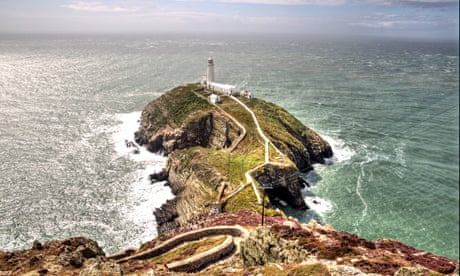- by foxnews
- 13 Jan 2025
Could Anglesey’s tidal energy project drive a new energy revolution?
Could Anglesey’s tidal energy project drive a new energy revolution?
- by theguardian
- 26 Apr 2022
- in technology

On the stunning and craggy coastline of Holy Island in north Wales, work has started on a construction project to generate energy from one of the world's greatest untapped energy resources: tidal power.
The Morlais project, on the small island off the west of Anglesey has benefited from £31m in what is likely to be the last large grant for Wales from the European Union's regional funding programme. It will install turbines at what will be one of the largest tidal stream energy sites in the world, covering 13 square miles of the seabed.
The project won planning permission from the Welsh government last December and is designed to power more than 180,000 homes once fully operational. Its installation will be phased so that impact on the marine environment can be monitored.
The last deep coal mine in Wales, Tower colliery near Aberdare, closed in 2008. Proponents of tidal energy say tide power could drive a new energy revolution in the country, creating thousands of jobs. A range of tidal projects, cost billions of pounds to develop, are now being proposed, and could put Wales at the forefront of a marine energy revolution.
The Morlais project is powered by kinetic energy from tidal currents, but the larger-scale projects involve building lagoons with huge sea walls incorporating turbines powered by the rise and fall of tides. The west coast of Britain has one of the highest tidal ranges in the world.
One of the most ambitious proposals is the North Wales Tidal Lagoon, with a sea wall of more than 19 miles, from Llandudno to Prestatyn. Its backers say the £7bn project could power more than a million homes and create over 20,000 jobs.
Henry Dixon, chairman of North Wales Tidal Energy, which is promoting the proposal, said it would operate with about 120 turbines and it was seeking £50m in funding for the planning process, including impact assessments, engineering and design.
He said: "Wales has this huge potential for marine and renewable energy. Wind and nuclear are needed, but we also need tidal. It is eminently cost effective and minister after minister says these schemes are very exciting, but they never get into government policy."
Britain's most ambitious proposal for a tidal energy project - a £30bn Severn estuary barrage stretching from Somerset to south Wales - was scrapped in 2010. The Royal Society for the Protection of Birds opposed the scheme, warning it would devastate the estuary's bird habitats. Ministers concluded there was "no strategic case" for the project.
In 2017, tidal schemes were given a boost with the publication of a review of tidal lagoons by the former energy minister Charles Hendry. He concluded that they could play a cost-effective role in the UK energy mix, helping to deliver security of supply and decarbonisation. "Tidal lagoons can be an important and exciting new industry," he said. "We are blessed with some of the best resources in the world, which puts us in a unique position to be world leaders."
Hendry recommended a "pathfinder" scheme, but it was never delivered. Proposals for a £1.3bn tidal lagoon in Swansea Bay were rejected in 2018, and tidal power gets only a meagre mention in the government energy strategy published this month.
Simon Hamlyn, chief executive of the British Hydropower Association (BHA), said the government had missed a "massive opportunity" by failing to include tidal lagoons, tidal barrages and hydropower as a major element in its new energy strategy.
He said: "It's an incomprehensible omission. I simply cannot understand why the government continues to dismiss hydropower and tidal range - both of which are world-beating technologies and which could power the UK into the future."
Hamlyn said the BHA was supporting a number of potential tidal range projects, including the North Wales Tidal Lagoon and a proposed £590m scheme at the Port of Mostyn in Flintshire, north Wales. There are also proposals for tidal schemes on the West Somerset coast, in Morecambe Bay and on Merseyside. The BHA said the schemes could deliver more than 10% of the UK's energy needs.
Roger Falconer, emeritus professor of water and environmental engineering at Cardiff University, said large tracts of agricultural land in Britain were being covered in solar panels despite the lack of sunshine in winter, but reliable tidal power was not being properly exploited.
"The problem with tidal lagoons and barrages is that you don't get the power until they are virtually completed, and that can take years," he said.
Large-scale schemes offered value for money compared with other energy sources, he added, but the government needed a better funding model for such projects.
A spokesperson for the Department for Business, Energy and Industrial Strategy said: "The government absolutely recognises the great potential of tidal power. This is why we have provided the marine energy sector with £175m of innovation and research and development funding, as well as ringfencing a £20m budget for tidal stream energy, for which bids are expected for Welsh projects.
"The UK is a global leader in tidal power, to the extent that almost 50% of the world's installed tidal stream capacity is in UK waters."
- by foxnews
- descember 09, 2016
Travel tips for attending President-elect Trump's inauguration as experts weigh in
Washington, D.C., is gearing up for travelers ahead of Inauguration Day on Jan. 20, bringing Americans to the nation's capital as President-elect Trump returns to D.C.
read more





